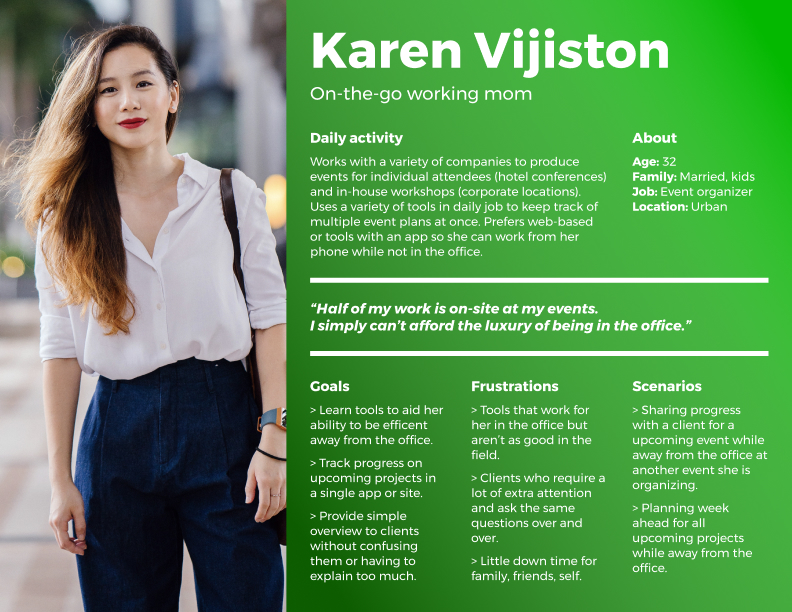One of the classic mistakes made in product design is the assumption that everyone is a potential customer. While that assertion could contain a sliver of truth, it’s not an efficient product development strategy.
Products built for everyone are often useful to no one.
When we identify a specific user or groups of users, our products are developed around solving a problem encountered by the core users. Alignment with user needs is the fuel needed to ensure the products are useful.
The development of Personas to reflect the users we’re building for can also provide substantial protection for the product’s growth prospects. Without a persona, products are far more likely to slip into scope creep, which kills promising products before they launch, and feature creep, will kill great products after they’ve entered the market.
Personas declare to everyone who your product is for and what problems you’re is attempting to solve.
While few Personas are perfect, the only way to get it completely wrong is to begin building a product without creating a Persona first.
Resources for review
Please review the following items before attempting the exercise below:
| Article/Video | Source/Author |
|---|---|
| Bringing who and why into focus | New Pragmatic |
| Making Personas Truly Valuable | Jared Spool |
Exercise
Length: One-to-two hours to complete
Much of the work needed to complete this exercise was actually done when you constructed your affinity map. As Personas are a composite look at your user, you’ll be lifting details for yours from the affinity map and details from your user interviews.
 Source: newpragmatic.com
Source: newpragmatic.com
To complete this project, you will need to do the following:
- Create two Personas
- Produce three scenarios related to using the food delivery service
- Identify three secondary roles for people who will influence either the persona or the service
///
Your Personas should address primary and secondary customer segments with each containing at least the following information:
- User goals
- User frustrations
- Basic demographics
- Financial boundaries
- Key quote
- Photo associated with the persona
Your Personas should be designed in a way that could be distributed with a team or group of stakeholders. To get you started, feel free to use this Figma persona template as a starting point. Your scenarios and secondary roles can simply be added as journal entries for review.
///
Update your Program Journal with a link to your Personas and the scenarios you created for this exercise. Post your Journal in the #Feedback-Loop channel for review.
Up next Fresh Market: User Stories